-
 bitcoin
bitcoin $114050.498472 USD
2.69% -
 ethereum
ethereum $4371.902473 USD
1.67% -
 xrp
xrp $2.995548 USD
1.55% -
 tether
tether $1.000215 USD
0.04% -
 bnb
bnb $892.359281 USD
1.43% -
 solana
solana $224.837338 USD
4.00% -
 usd-coin
usd-coin $0.999716 USD
-0.03% -
 dogecoin
dogecoin $0.246520 USD
3.37% -
 tron
tron $0.341142 USD
1.74% -
 cardano
cardano $0.886598 USD
2.57% -
 hyperliquid
hyperliquid $55.973026 USD
5.62% -
 chainlink
chainlink $23.669165 USD
2.89% -
 ethena-usde
ethena-usde $1.000760 USD
-0.02% -
 sui
sui $3.612536 USD
3.80% -
 stellar
stellar $0.388361 USD
4.33%
How long does a Dogecoin transaction take?
Dogecoin transactions typically take 1 to 6 minutes for confirmation, depending on fees and network congestion.
Jul 06, 2025 at 08:14 am
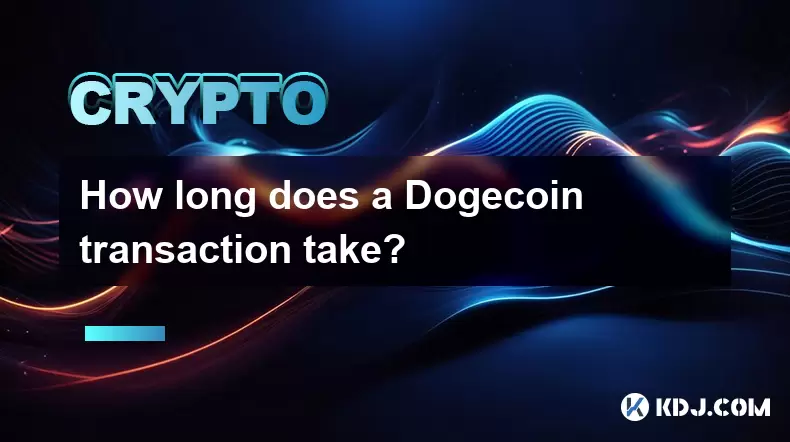
Understanding Dogecoin Transaction Times
When sending or receiving Dogecoin (DOGE), one of the most common questions users have is how long a transaction takes to complete. The time required for a Dogecoin transaction can vary depending on several factors, including network congestion, transaction fees, and wallet settings. Unlike traditional banking systems that may take days to process transfers, cryptocurrency transactions like those on the Dogecoin blockchain typically occur much faster.
The Dogecoin network operates on a decentralized ledger, meaning that transactions are verified by miners rather than centralized institutions. Once a transaction is broadcasted to the network, it enters a pool of unconfirmed transactions. Miners then select transactions based on the attached fee and begin validating them into blocks.
Factors Affecting Transaction Speed
Several key variables influence how quickly a Dogecoin transaction is confirmed:
- Transaction Fee: Higher fees generally result in faster confirmations since miners prioritize transactions with higher rewards.
- Network Congestion: During periods of high demand, more transactions are waiting in the mempool, which can delay confirmation times.
- Wallet Settings: Some wallets allow users to customize the transaction fee. Choosing a low fee might lead to slower processing.
- Block Time: Dogecoin has a block time of approximately one minute, which means a new block is mined roughly every 60 seconds. However, multiple confirmations are often required for security.
If you're sending DOGE and want your transaction to be processed quickly, setting a higher transaction fee will help ensure it gets included in the next available block.
Typical Confirmation Times
In most cases, a Dogecoin transaction requires at least one confirmation to be considered valid. This usually happens within a few minutes under normal network conditions. Exchanges and services often require three to six confirmations before considering a deposit complete. Given Dogecoin’s one-minute block time, this translates to roughly 3 to 6 minutes for full confirmation.
However, during peak usage or if a very low fee was set, confirmation could take longer—sometimes up to 15–30 minutes or more. If a transaction remains unconfirmed for an extended period, some wallets allow users to rebroadcast or replace the transaction with a higher fee using Replace-by-Fee (RBF) functionality.
How to Check Your Transaction Status
To monitor the status of a Dogecoin transaction, you can use a blockchain explorer such as blockchair.com or blockcypher.com. Here's how to check your transaction:
- Obtain the transaction ID (TXID) from your wallet.
- Copy and paste the TXID into the search bar of the chosen blockchain explorer.
- Review the details, including the number of confirmations and transaction fee.
- If the transaction is unconfirmed, look for options like 'double-spend' or 'rebroadcast' if supported by the explorer.
Some wallets also provide internal tracking features that display real-time updates on sent and received transactions.
Troubleshooting Slow Transactions
If your Dogecoin transaction is taking longer than expected, consider the following steps:
- Verify that the correct transaction fee was set. Low fees can cause delays.
- Ensure your wallet is fully synchronized with the blockchain.
- Use a custom fee setting in your wallet to increase the fee if possible.
- Check whether your wallet supports RBF (Replace-by-Fee) to speed up stuck transactions.
- In rare cases, network issues or wallet bugs may cause delays—consider restoring your wallet from backup or switching wallets.
If the transaction is still unconfirmed after many hours, it may eventually drop from the mempool and return the funds to your wallet, although this depends on the specific node policies.
Frequently Asked Questions
Q: Can I cancel a Dogecoin transaction once it’s been sent?A: No, once a transaction is broadcasted to the Dogecoin network, it cannot be canceled. You can only attempt to replace it with a higher fee if RBF is supported.
Q: Why does my transaction show zero confirmations for so long?A: This usually happens when the transaction fee is too low. Miners prioritize transactions with higher fees, so your transaction may be stuck until the network clears or until you rebroadcast it with a higher fee.
Q: How many confirmations are needed for a Dogecoin transaction to be secure?A: While one confirmation is technically sufficient, exchanges and services typically wait for three to six confirmations to ensure the transaction isn’t reversed due to chain reorganization.
Q: Does the size of the transaction affect its speed?A: No, Dogecoin transactions are not affected by the amount being sent. The speed depends on transaction fee and network conditions, not the value of DOGE transferred.
Disclaimer:info@kdj.com
The information provided is not trading advice. kdj.com does not assume any responsibility for any investments made based on the information provided in this article. Cryptocurrencies are highly volatile and it is highly recommended that you invest with caution after thorough research!
If you believe that the content used on this website infringes your copyright, please contact us immediately (info@kdj.com) and we will delete it promptly.
- MAGACOIN FINANCE: The Presale Pick Leading the 2025 Race
- 2025-09-12 00:25:13
- Etheria: Restart Heats Up with New Heroes and a Boss Battle!
- 2025-09-12 00:25:13
- Figure's IPO: A Blockchain Valuation Story
- 2025-09-12 00:30:01
- MiCA License, SportFi, and Blockchain: A New Era for Sports Engagement
- 2025-09-12 00:30:01
- Seoul's Crypto Embrace: Tax Breaks and a New Era for Firms
- 2025-09-12 00:30:01
- Rare UK 50p Coins: Unearthing Hidden Treasures in Your Pocket Change
- 2025-09-12 00:30:25
Related knowledge
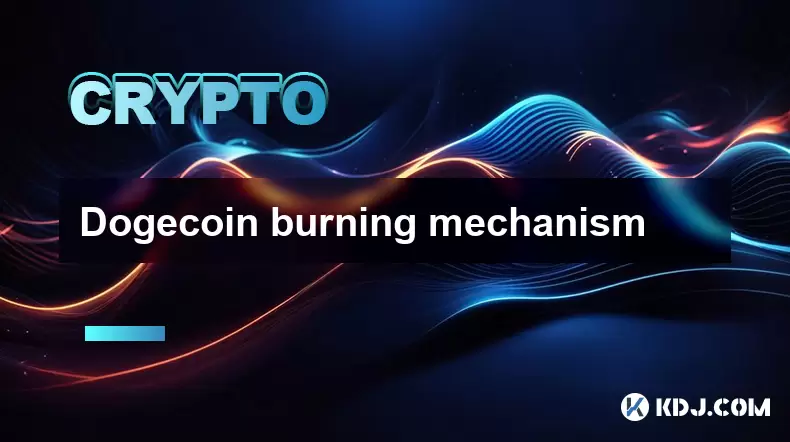
Bitcoincoin burning mechanism
Jul 20,2025 at 09:21pm
What is the Dogecoin burning mechanism?The Dogecoin burning mechanism refers to the process of permanently removing DOGE tokens from circulation by se...

How to earn free Bitcoincoin?
Jul 19,2025 at 10:08pm
What is Dogecoin and Why Earn It?Dogecoin (DOGE) started as a meme-based cryptocurrency in 2013 but has grown into a widely recognized digital asset. ...

Is Coinbase a good wallet for Bitcoincoin?
Jul 19,2025 at 04:42pm
Understanding Coinbase as a Wallet Option for DogecoinWhen considering where to store Dogecoin, Coinbase is often mentioned as a potential option due ...
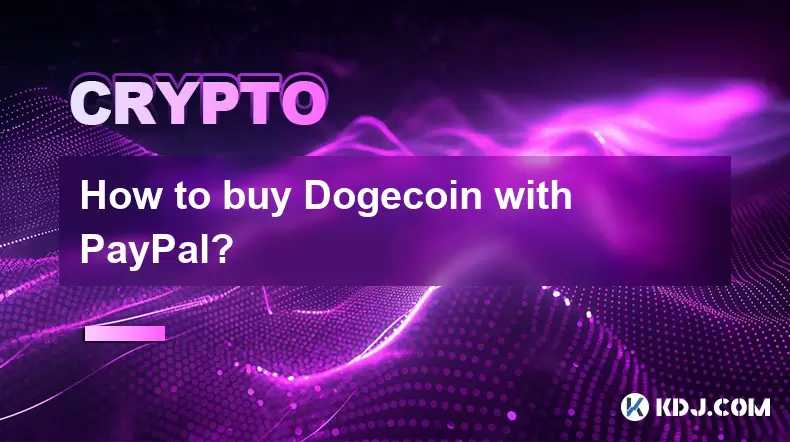
How to buy Bitcoincoin with PayPal?
Jul 23,2025 at 06:57am
Understanding the Basics of Buying DogecoinBefore diving into the process of buying Dogecoin with PayPal, it’s essential to understand what Dogecoin i...
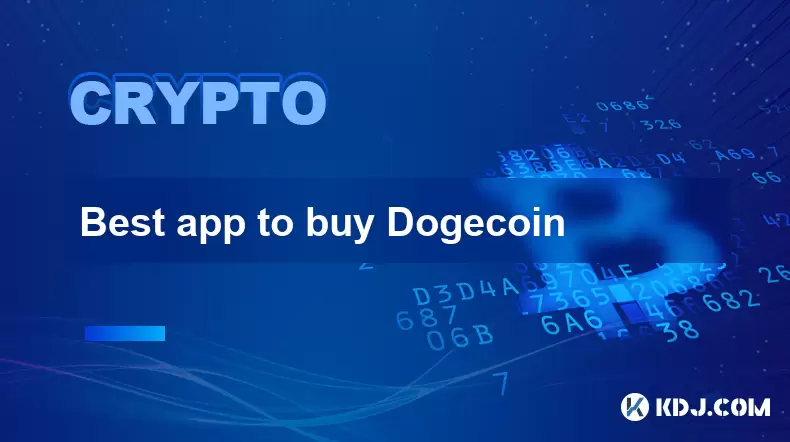
Best app to buy Dogecoin
Jul 23,2025 at 03:08pm
What Is a Cryptocurrency Exchange and How Does It Work?A cryptocurrency exchange is a digital marketplace where users can buy, sell, or trade cryptocu...
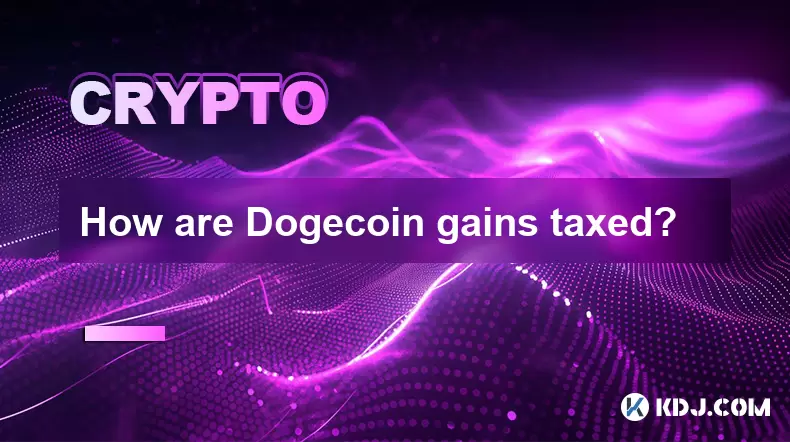
How are Dogecoin gains taxed?
Jul 25,2025 at 07:01am
Understanding the Taxation of Dogecoin GainsWhen it comes to Dogecoin (DOGE), many investors are drawn to its meme-inspired branding and volatile pric...

Bitcoincoin burning mechanism
Jul 20,2025 at 09:21pm
What is the Dogecoin burning mechanism?The Dogecoin burning mechanism refers to the process of permanently removing DOGE tokens from circulation by se...

How to earn free Bitcoincoin?
Jul 19,2025 at 10:08pm
What is Dogecoin and Why Earn It?Dogecoin (DOGE) started as a meme-based cryptocurrency in 2013 but has grown into a widely recognized digital asset. ...

Is Coinbase a good wallet for Bitcoincoin?
Jul 19,2025 at 04:42pm
Understanding Coinbase as a Wallet Option for DogecoinWhen considering where to store Dogecoin, Coinbase is often mentioned as a potential option due ...

How to buy Bitcoincoin with PayPal?
Jul 23,2025 at 06:57am
Understanding the Basics of Buying DogecoinBefore diving into the process of buying Dogecoin with PayPal, it’s essential to understand what Dogecoin i...

Best app to buy Dogecoin
Jul 23,2025 at 03:08pm
What Is a Cryptocurrency Exchange and How Does It Work?A cryptocurrency exchange is a digital marketplace where users can buy, sell, or trade cryptocu...

How are Dogecoin gains taxed?
Jul 25,2025 at 07:01am
Understanding the Taxation of Dogecoin GainsWhen it comes to Dogecoin (DOGE), many investors are drawn to its meme-inspired branding and volatile pric...
See all articles










































































